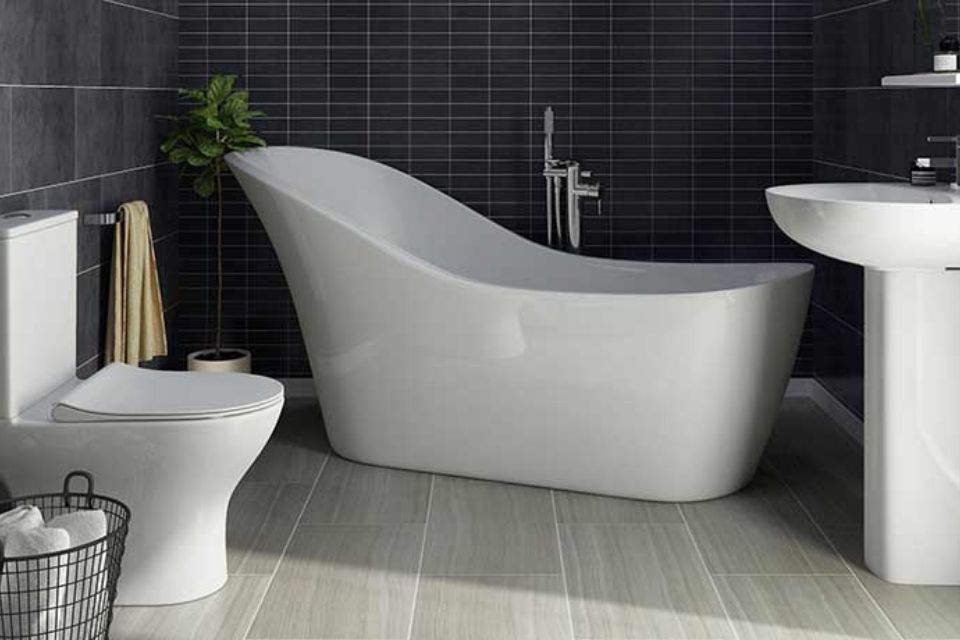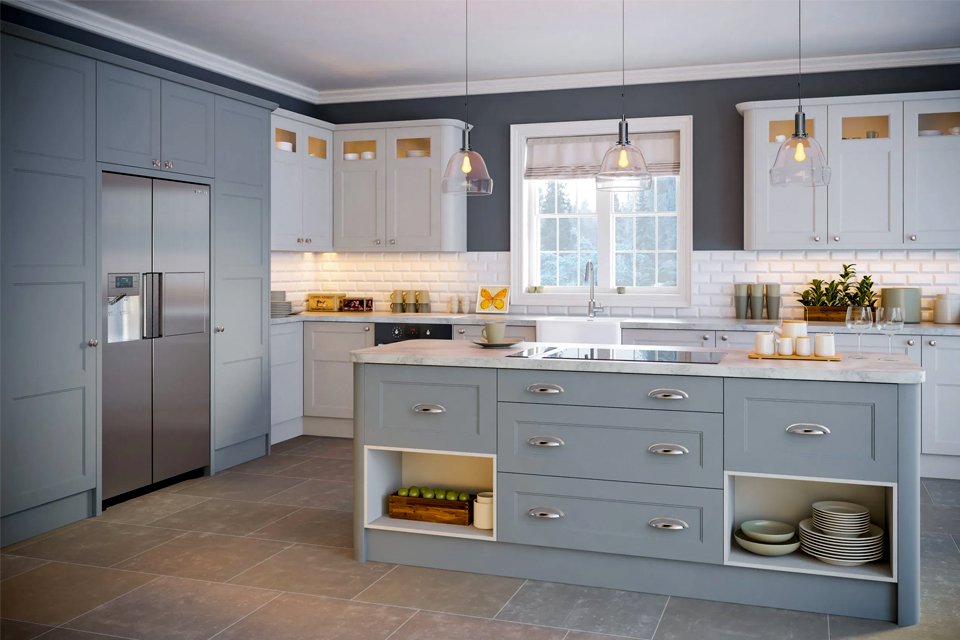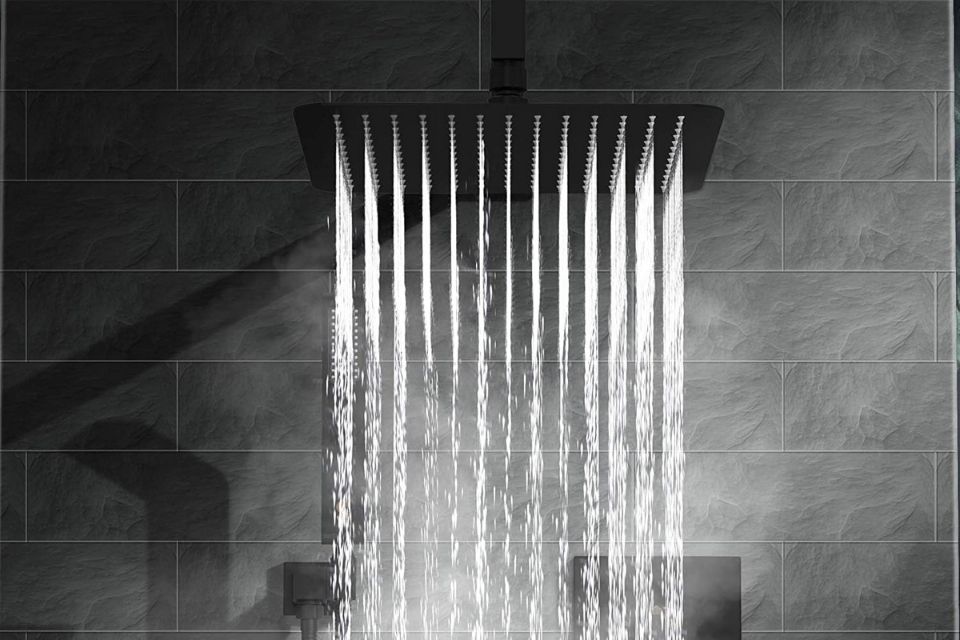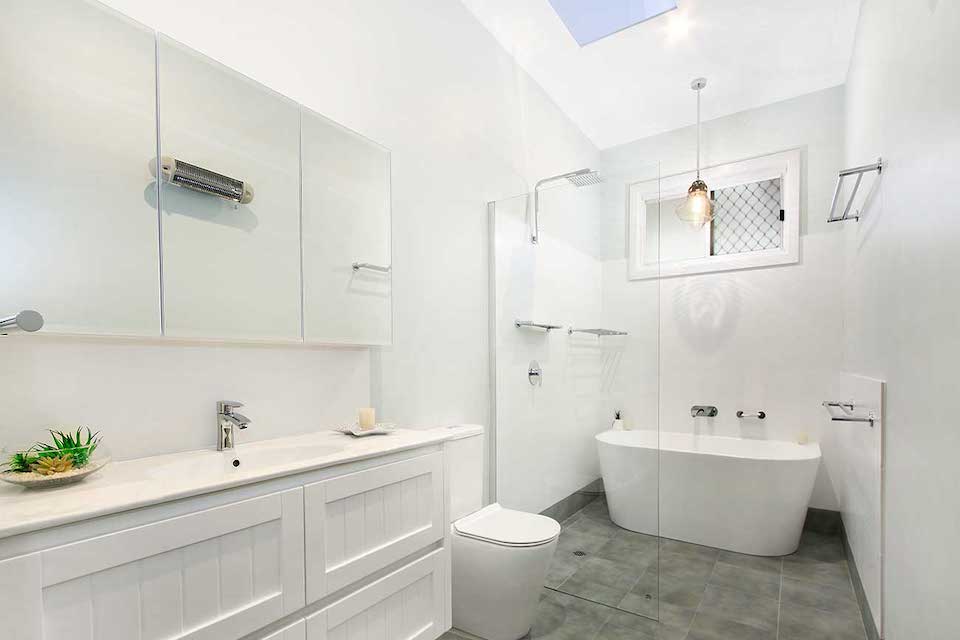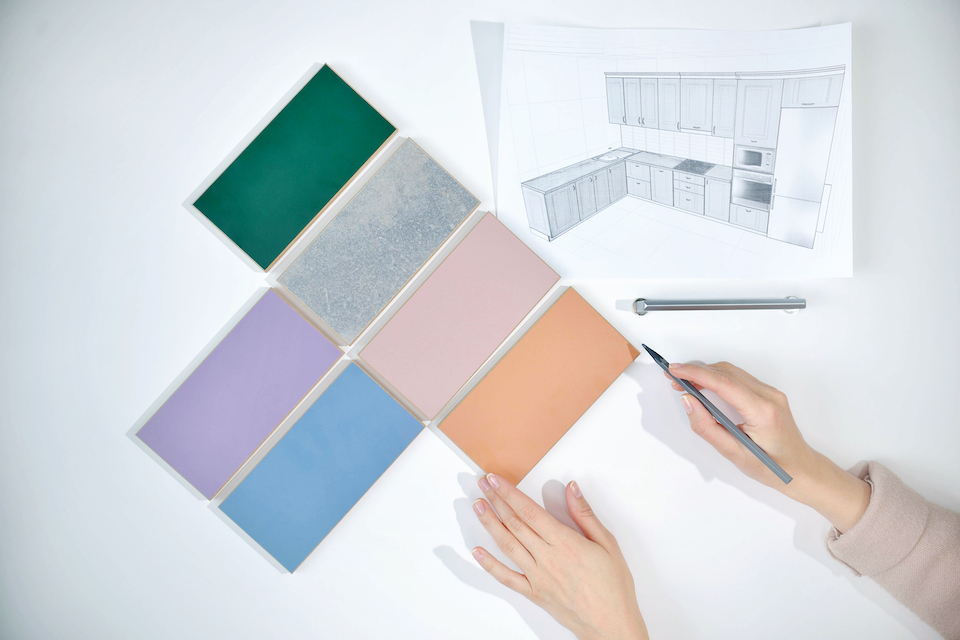How Much to Install a Bath?
The average cost of installing a bath ranges from £290 to £4,650. The overall cost of fitting a bath will depend on the type of bath you choose, the bathtub's size, ease of access and the number of tradespeople required for the job.
Your property's location is also a significant factor, as contractors tend to charge more for remote areas, and you may pay more if you live in a major city like Manchester or London.
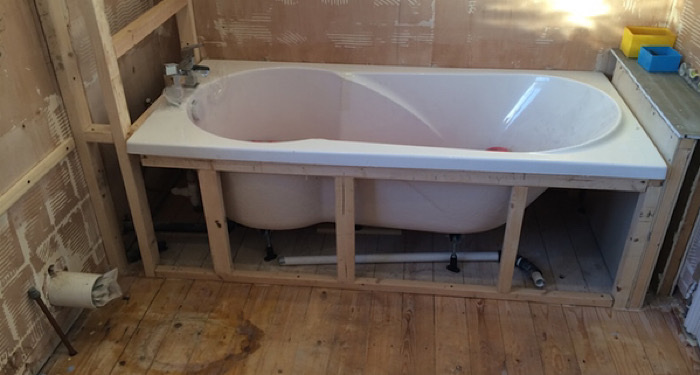
Bath Installation Prices
Here is a breakdown of bath installation prices for installing different types of bathtubs which normally takes around two to four hours to complete with the help of two tradespeople.
| Type of Bath | Total Cost |
|---|---|
| Freestanding | £500 - £4,550 |
| Walk in bath | £370 - £3,050 |
| Spa bath | £700 - £2,450 |
| Single-ended | £290 - £3,250 |
| Double-ended | £320 - £4,650 |
| Slipper | £520 - £4,350 |
- How Much to Install a Bath?
- How Much is a Bath? (Supply Only)
- What Additional Bath Installation Costs Are There?
- What Factors Impact Bath Installation Costs?
- Important Considerations for People with Mobility Issues
- Labour Cost to Install a New Bath
- How Long Does It Take to Fit a Bath?
- Things to Consider When Installing a New Bath
- Choosing a Bath
- Types of Taps
- How Much Does It Cost to Remove a Bath?
- FAQs
How Much is a Bath? (Supply Only)
When planning a bathroom renovation or simply replacing your existing bath, it’s important to understand the supply costs of your chosen bath type. The price of a bath can vary significantly depending on its style, size, and features. Whether you are looking for a basic option or a luxurious centerpiece, understanding the potential costs upfront can help you budget effectively and avoid unexpected expenses.
If you’re considering a DIY installation or want to buy the bath yourself before getting it installed by a professional, here is a breakdown of the typical supply costs for popular bath types:
| Type of Bath | Supply Cost |
|---|---|
| Freestanding | £350 - £4,400 |
| Walk in bath | £220 - £2,900 |
| Spa bath | £550 - £2,300 |
| Single-ended | £140 - £3,100 |
| Double-ended | £170 - £4,500 |
| Slipper | £370 - £4,200 |
In addition to the style and design of the bath, another key factor that can influence the overall supply cost is the material the bath is made from. Different materials not only vary in price but also offer distinct benefits in terms of durability, heat retention, appearance, and ease of maintenance. Whether you are seeking a lightweight and affordable option or a more robust, luxurious feature, it’s important to know the cost of each.
Below is some average supply costs for baths made from the most common materials:
| Bath Material | Supply Cost |
|---|---|
| Acrylic | £140 - £3,400 |
| Steel | £150 - £1,335 |
| Cast Iron | £1,000 - £3,000 |
| Stone | £1,200 - £4,450 |
What Additional Bath Installation Costs Are There?
When fitting a new bath, there are additional jobs that can be completed at the same time to give your bathroom a new updated look. Let's take a look at some examples:
New Bath Screen
Many opt to install a bath screen during a bathtub installation, as this prevents water splashes and damp issues on your bathroom floor. Bath screens cost anywhere from £10 to £1,000 depending on the type you choose.
Shower Installation
Unless you have opted for a walk in bath, you will not have the luxury of choosing whether you want to take a nice relaxing bath or a quick shower. However, you can always install a shower after your bath has been installed.
The average cost of installing a shower ranges from £207 to £1,600, which will depend on the model you select.
Bathroom Tiles
To ensure your bathroom floor is protected and looks aesthetically pleasing, you may want to consider installing new tiling.
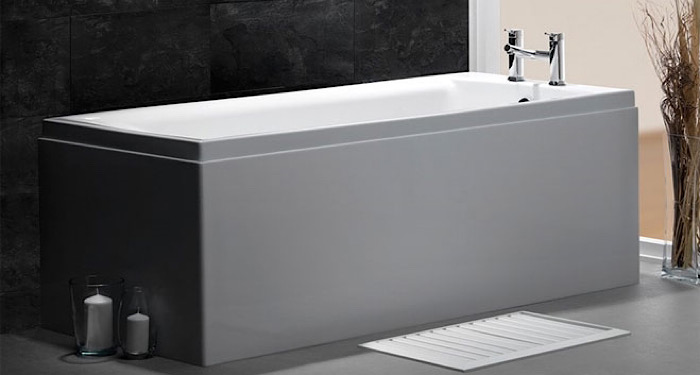
There are various tile materials to choose from including ceramic which costs around £8 to £100 per square metre, £25 to £136 per square metre for marble and up to £200 per square metre for glass tiles.
Underfloor Heating
One of the best ways to heat your bathroom is by fitting underfloor heating below your flooring. This will make the floor more comfortable to walk on and will also ensure your bathroom is warm after you jump out of the bath.
You can either opt for electric underfloor heating which costs £50 to £60 per square metre or wet underfloor heating which is typically priced at £150 per square metre.
What Factors Impact Bath Installation Costs?
There are also various cost-affecting factors that will affect the overall price, including:
Type of Bathtub
One of the main factors that affects the overall cost is the type of bath you choose. For instance, if you have a low-budget in mind, you may want to opt for a single-ended acrylic bath which costs around £140.
If you are looking for a luxury model, you should look at freestanding steel baths, which cost up to £4,500.
Size of Bath
The bath's size will also significantly impact the price, as the larger the bath, the harder it is to install, as typically two or more tradespeople would be required to move and fit the bath.
This will cause labour costs to increase, as plumbers tend to charge an hourly rate per person.
Bath Installation Area
The installation area is also a huge factor, as fitting a bath in a tight space may prove more difficult and will therefore take longer.
You also need to consider the condition of the space, as it may need to be prepared before the bath can be installed, which again will increase the duration.
Location
Where you like in the UK can also change the price you will pay for installation.
The average cost for installing a bath is £150 although, you should also expect to pay more in areas such as London which charge around £200 per hour to fit a bath, compared to £100 in Northern England.
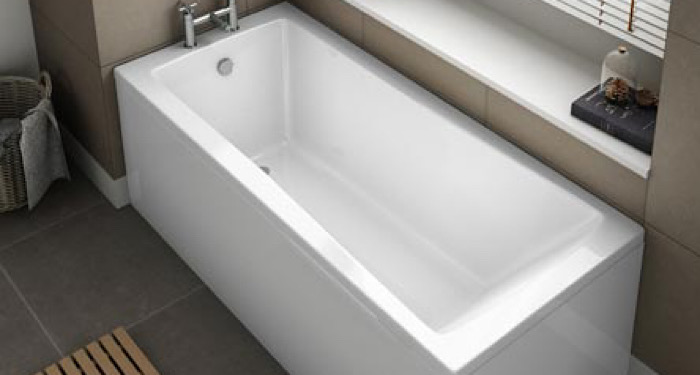
Important Considerations for People with Mobility Issues
When planning a bath installation for someone with limited mobility, it’s crucial to choose the right features and products to ensure safety, comfort, and ease of use. Thankfully, there is a wide range of accessible bath solutions specifically designed to support individuals with mobility challenges.
Here are some essential factors to consider:
- Bath Strength: Ensure the bath can safely support the additional weight of mobility aids, such as bath seats and hoists.
- Bath Depth: Shallow baths can be easier to use for those with limited upper body strength.
- Safety Features: Consider adding grab rails, non-slip mats or strips, and bath boards for extra safety and support.
- Ease of Access: Walk-in baths are ideal for those who struggle to step over traditional bath sides.
- Dual Functionality: Many walk-in baths allow for both seated bathing and overhead showers.
One of the most recommended solutions for mobility issues is a walk-in bath. With easy access doors and built-in seating, they provide a safe, convenient, and comfortable bathing experience. Simply step inside, close the door, fill the tub, and relax with peace of mind.
Installing a new bath can transform your bathroom into a relaxing retreat, adding both comfort and style to your home. Whether you choose a sleek modern design or a classic slipper bath, professional installation ensures safety and a perfect fit.
Labour Cost to Install a New Bath
One of the most significant costs you need to consider when having a new bath installed is the labour costs. Plumbers typically charge around £30 to £50 per hour to fit a new bath, and a bathtub fitting tends to require two tradespeople, which will double the labour cost.
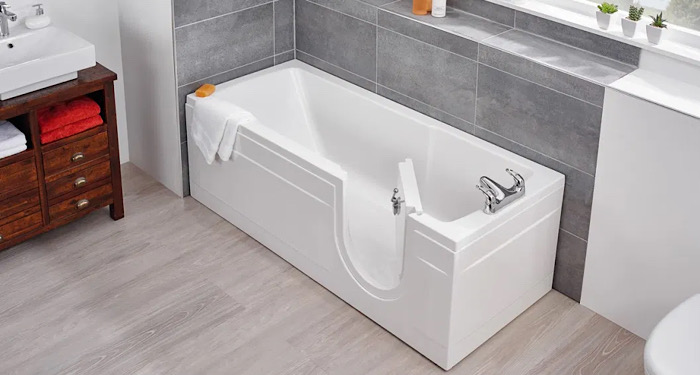
If you need your old bath ripped out, it will cost an estimated £250 to £350, which includes removing and disposing of the old bath and installing the new one.
An electrician may be required if you opt for a spa bath, as this requires electric controls. Electricians tend to charge around £25 to £50 for their services.
How Long Does It Take to Fit a Bath?
An average bath installation normally takes around two to four hours to complete. However, this will vary depending on the type of bath, you choose, as some are easier to fit than others.
If you are fitting a bath in a brand-new bathroom, you need to consider the time spent preparing the area, especially if you have an inset or recessed bath installed.
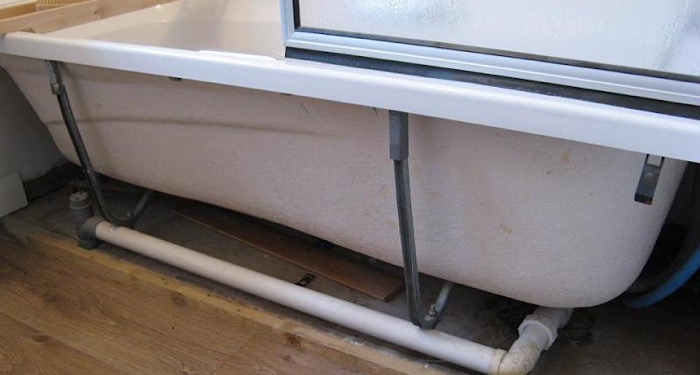
This will require additional time to dig out and build a space to accommodate the bath.
The job may also take longer if any pipes need to be moved or electrics need to be wired in, although overall the work should take no longer than one day.
Things to Consider When Installing a New Bath
Apart from choosing the right bathtub for you, there are a few things that you must check before you install your bath:
- Check that the capacity of your water heater is large enough for your new bath otherwise, you may be unable to fill your bath
- Any electrical work that has to be carried out must adhere to Part P of the Building Regulations - therefore should be completed by an electrician
- If buying a cast iron or stone bath, ensure that your property can structurally take this weight. Otherwise, you could be looking to reinforce the floors
- Ensure that your new bath is in keeping with the rest of your bathroom or you could be looking at a total remodel
Choosing a Bath
There are a wide range of bath models to choose from, which cater to various style preferences and budgets.
To help you choose the right bath, take a look at the below guide, which sets out the different types of bathtubs and the costs as well as the pros and cons of each.
Freestanding Bath Cost
A freestanding bath is often considered the ultimate statement piece in a luxury bathroom. Not only does it serve as a functional place to soak and unwind, but it also acts as a stunning centrepiece that instantly elevates the look and feel of the entire space.
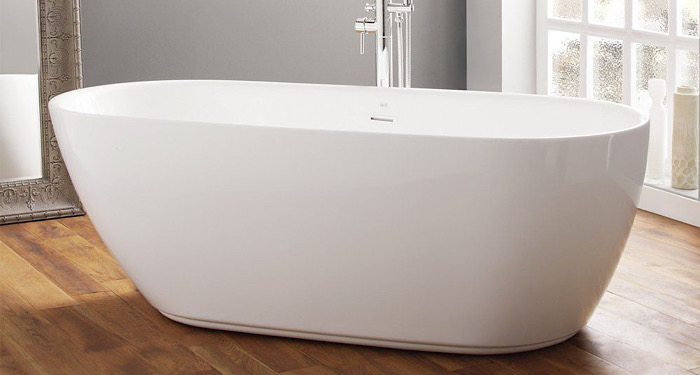
Unlike standard built-in baths, freestanding bathtubs are not fixed to walls and do not require surrounding panels or tiling. Instead, they are positioned independently anywhere in the bathroom, with plumbing typically running through the floor to connect the taps and waste system. This flexibility in placement allows for more creative bathroom layouts and adds a spacious, open feel to the room.
The purchase price of a freestanding bath ranges from £550 to £4,650.
Pros:
- Offers a luxurious feel
- Available in various styles and sizes
- Easy to install and replace
Cons:
- Not ideal for small bathrooms
- Requires two or more people to carry the bath
- May require additional plumbing work
Walk In Bath Cost
If you enjoy the comfort of a relaxing bath but also want the speed and convenience of a shower, a walk-in bath could be the perfect solution. A walk-in bath combines the best of both worlds. These baths are particularly ideal for individuals with limited mobility, elderly users, or anyone seeking a safer, more accessible bathing option.
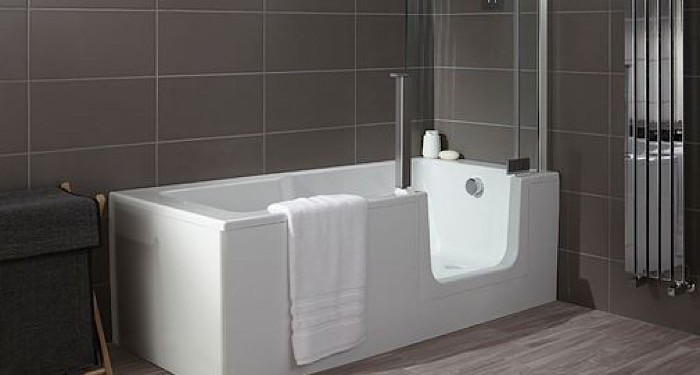
Unlike standard baths, a walk-in bath features a watertight door that allows easy entry without needing to climb over high sides. Many models also include built-in seating and the option for an overhead shower, offering flexibility and enhanced safety.
The cost of a walk in bath can range from £370 to £3,050depending on the design and extra features you choose.
Pros:
- Combines the benefits of a bath and shower in one
- Great for small bathrooms
- Great option for people with limited mobility
Cons:
- More complicated to install
- Requires a shower screen
- You must remain inside while the bath fills and drains
Spa Bath Cost
A spa bath, also known as a whirlpool or jacuzzi bath, is one of the most luxurious options available for your bathroom. Designed to provide a therapeutic and relaxing experience, spa baths feature built-in jets that release streams of water or air, creating a soothing massaging effect that can help ease muscle tension and promote relaxation.
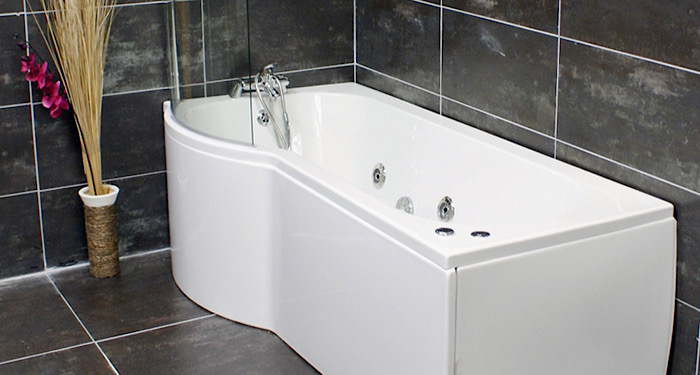
The typical cost of a spa bath ranges from £700 to £2,450, depending on the size, number of jets, brand, and additional features such as LED lighting or digital controls. While these baths are on the higher end of the price scale, many homeowners see them as an investment in both comfort and well-being.
Pros:
- Luxury bath experience
- includes massaging jets
- Ideal for creating a spa-like atmosphere
Cons:
- Expensive fitting
- Requires an electrician to fit the bath
- Ongoing maintenance may be needed
Single-ended Bath Cost
Single-ended baths are one of the most popular choices for traditional bathrooms and are commonly used in homes across the UK. These inset bathtubs feature taps and a waste outlet positioned at one end, with the opposite end designed with a gentle slope to provide back support for a more comfortable and relaxing soak. This classic design is perfect for those who primarily bathe alone and prefer a practical, space-efficient solution.
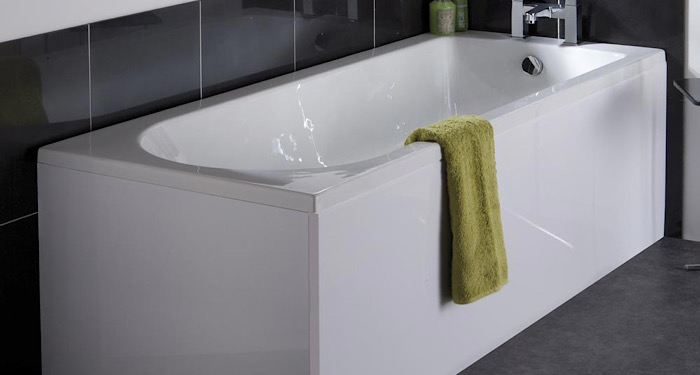
The cost of a single-ended bath typically ranges from £290 to £3,250, depending on the material, size, and brand. Acrylic single-ended baths tend to be more affordable, while steel or stone resin models can command higher prices. Their straightforward design also makes them more budget-friendly to install compared to more complex bath types.
Pros:
- Ideal for walk in baths
- Perfect for solo soaks
- Ideal for smaller bathrooms
Cons:
- Limited space
- Tap positioning is not flexible
Double-ended Bath Cost
In comparison to a single-ended bath, a double-ended model offers more flexibility in terms of tap and waste placement, as they can be attached to a wall or placed in the centre of the bath. This design allows both ends of the tub to be used comfortably, making it ideal for couples, families, or anyone who enjoys a more spacious bathing experience.
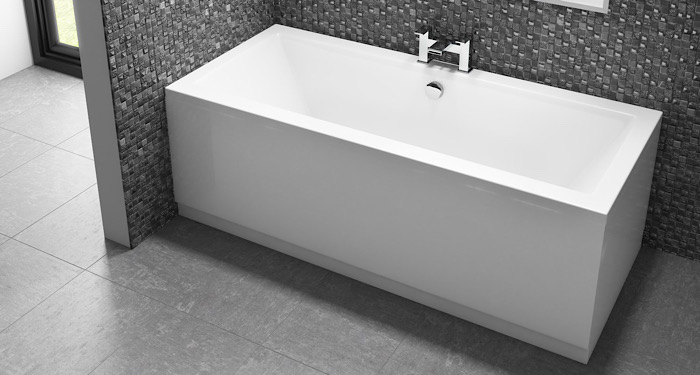
One of the key benefits of a double-ended bath is the extra internal space it provides, making it perfect for taller individuals or for bathing young children. It also offers a sleek, symmetrical look that complements both modern and traditional bathroom designs.
A typical double-ended bath tends to cost around £320 to £4,650.
Pros:
- Offers more legroom
- Good for homes with children
- Flexible tap and waste positioning options
Cons:
- Not the best option for small bathrooms
- Location of the pipes could limit the installation
- Heavier than standard baths
Slipper Bath Cost
Slipper baths are a timeless and elegant choice, often associated with vintage and luxury bathroom designs. Characterised by their distinctive sloping, roll-top shape, slipper baths provide excellent support for the back, allowing for a deeply relaxing soak. This iconic design originated in the Victorian era, where these baths were traditionally crafted from cast iron and finished with enamel for durability and classic appeal.
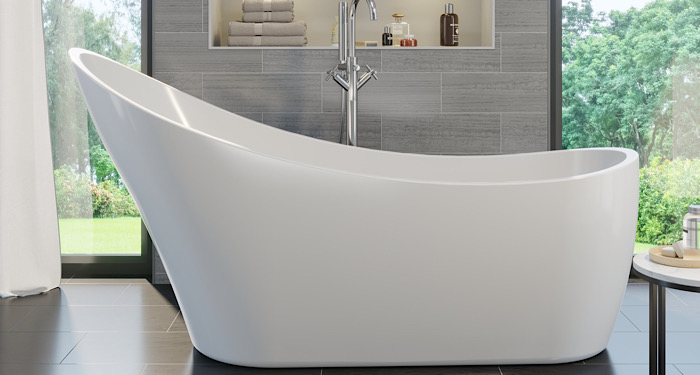
Today, slipper baths are available in a wide variety of materials, including acrylic, stone, and modern composites, with styles ranging from traditional claw-footed tubs to sleek, contemporary freestanding designs.
Slipper bathtubs range from £520 to £4,350.
Pros:
- Offers excellent comfort
- Can accommodate more than one person
- Luxurious and eye-catching design
Cons:
- Require floor support
- Not ideal for small spaces
- Generally higher in cost
Types of Taps
Once you’ve chosen your bath the next step is picking out the best tap for you. There is a wide variety of taps available on the market however you need to ensure you get the correct tap for your type of bath.
There may only be one hole for the tap or the tap could be wall-mounted. If you do consider a wall-mounted tap these are potentially more expensive to fit due to the pipework being behind a wall.
Here we’ve listed some examples of available taps:
- Floor-mounted taps - connected to the floor
- Wall-mounted taps - connected to the wall but can come as either a mixer tap or two separate taps
- Deck-mounted taps - connected to the top of the bath deck
- Bath spouts - a luxury mixer tap that is usually connected to the wall. They can be an ordinary mixer tap or a waterfall tap
Bath Repairs
If you notice any issues with your bathtub, then you may want to consider fixing it yourself or calling out a professional to deal with it. There are various repairs to consider regarding your bathtub with different bath repair prices such as:
Bath Scratches
If you notice any scratches on the side of your bath, do not panic and order a brand-new bath, as this problem can easily be fixed.
You can use a rubbing compound or texture cream to remove any scratches, however, try to avoid this with an acrylic bath as these products tend to be too harsh. Instead, you should use an acrylic-friendly scratch repair product to gently remove any visible marks.
Cracked Bath
A cracked bath can be problematic; however, they can be fixed without the need for a replacement in some instances. The cost of repairing a bath with cracks is around £30 to £50 if you hire a professional.
You could also consider doing it yourself, although you need to be especially careful with plastic or acrylic baths, as cracks affect the bathtub's integral support. If the crack is significant, then it will need to be replaced.
However, smaller cracks can be fixed with a fibreglass bath repair kit, which typically cost around £30 to £40.
Leaking Bathtub Drain
If you notice your bathtub drain is leaking, you should tend to it immediately. If the problem is due to faulty pipes and fittings, then you will need to call a plumber to fix the issue, who will charge a minimum bath repairs cost of £30.
If the bathtub drain is leaking because of a failed seal, then you can fix this yourself. All you need to do is remove the drain plug and use Channellock pliers or a drain key to unscrew the drain.
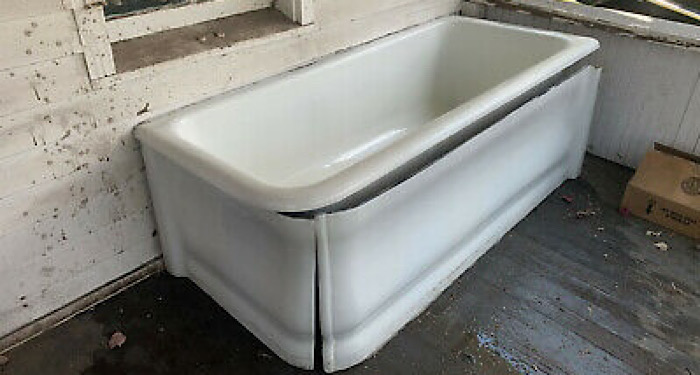
You should then remove the old plumber's putty by softening it with a hairdryer or another heat source. Once it's soft enough, you can then scrape and remove the putty with a putty knife.
Once the old putty is out the way, you should then apply new putty around the size of ten pence coin and roll it around to soften it into a rope shape. You should then place this under the tub drain and remove any excess.
After this is complete, the drain lips can then be tightened, and the area should be cleaned before checking for leaks.
How Much Does It Cost to Remove a Bath?
If you are installing a new bath or shower, then you will need to consider the cost of removing your old bath. Most plumbers will include this in their installation cost, which normally amounts to around £250.
If it is not included in the price, then the cost is typically around £40 to £70 for bathtub removal, which normally includes waste disposal. You could also consider skip hire which ranges from £60 for a 2-yard skip up to £420 for a 16-yard skip.
Is It Possible to Replace a Bath Without Removing Any Tiles?
While this is possible we would always recommend hiring a professional tradesperson to replace the bath. Without having the correct knowledge you could easily break tiles which you may not be able to replace.
FAQs
Q: How do you fit a new bath panel?
A: Before fitting a new bath panel, you need to make sure that you choose the right size for your bathtub, as well as the right material. There are two main options: acrylic and MDF, with the former being the least expensive.
To fit a bath panel, you will need an electric drill, screwdriver, tape measure, pencil, wooden batten and wooden screws. Once you have all these items, you can then start to measure the bath panel against your bath, followed by securing a wood batten to the floor.
You can then cut your bath panel to size before drilling into place at the side of the bath, making sure your drill evenly spaced holes of up to 12mm. Once it is drilled in place, you can secure it with wooden screws and cap them off.
Q: How do you repair a chipped enamel bath?
A: If you notice small chips in your bath, you can use an epoxy kit that usually comes in various white shades to match your bathtub. Before applying the epoxy, you should first scrub the chipped area with a sponge, hot water and soap and then dry it thoroughly.
You should then follow the directions on the kit, which will involve mixing the two epoxy components in a disposable dish. You can use a toothpick or matchstick to do this. Use a spatula or paintbrush to apply a thin layer of the substance on the area, making sure to avoid other areas.
The epoxy will then need to be left to dry for around two to three hours before it can be sanded with 400-grit sandpaper.
Q: How much water can a bath hold?
A: The amount of water a bath can hold will depend entirely on the size of the bath. However, a standard tub will typically hold around 302 litres of water, while smaller models can only accommodate 150 litres.
Q: What is the best way to clean a bath?
A: To ensure your bath is protected against damage, you should try to clean it as often as possible. One of the best methods for cleaning your bath involves removing everything from the bath, including toiletries and toys.
You can then start to clean the tiles around the bath with a tile cleaner and grout brush, before rinsing it thoroughly.
Once the tiles are clean, you should then clean the drain with white vinegar and baking soda which should be poured down the drain and left for up to five minutes before rinsing it with water.
You can then wipe down the entire bath from top to bottom and use a small cleaning brush to eliminate stubborn soap scum and stains.
Q: How do you seal a bath?
A: If your bath is installed against the wall or you have a corner bath, you will need to ensure that it is sealed properly. To do this, you will need safety equipment, a caulking gun, masking tape, silicone sealant, a silicone applicator and a safety knife.
Once you have all your tools, you should start by taping the edges around the bath to ensure a neat finish. You should then prepare the sealant while wearing your safety equipment.
You can then attach a nozzle to the silicone gun which can be used to apply the sealant around the bath. The sealant should then be smoothed out with a sealant applicator.
Q: Can I install a bath myself?
A: Although it may seem appealing to attempt to install a bath yourself, we wouldn’t recommend this unless you have extensive plumbing experience.
If you miss a step in the process or even have a small leak it can go on to cause a great amount of damage to your property. We would always recommend having a professional plumber fit your bath.

